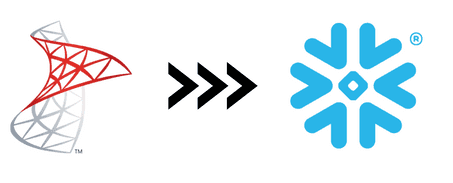Whether you are transitioning from an old server to a new one to banish the traditional ETL complexities or just considering making the switch to improve or speed up the analytics, this guide is prepared perfectly which gives the differences between SQL Server and Snowflake to make the move as easy as possible.
According to your usage, you can choose one of two main solutions such as On-premises and Cloud-based solutions. On-premises solutions like an SQL server gives control over the hardware and the software however, it is expensive to maintain and has limitations on its scalability. Whereas cloud-based solutions such as snowflake servers provide better flexibility, they are easier to manage and the resources are scalable on demand.
Data management is changing fast and organizations today need a platform that can meet their dynamic scaling needs. In fact, for a lot of companies, moving from legacy systems like SQL Server to new cloud data platforms is becoming a strategic imperative. One major shift in the last couple of years that has been seen prominently is the transition from SQL Server to Snowflake, and which offers more benefits like scalability, efficiency, cost saving and enhanced real-time insights access.
SQL Server is a mature, transactional database used in various applications over many years. However, as the volume of data expands exponentially and with the increasing need for real-time analytics, organizations are struggling to get the performance they require from the traditional systems. Transitioning to Snowflake is a modern way by which businesses can enjoy instant elasticity, separation of storage from compute and advanced security, leading to smarter and quicker business decisions.

Snowflake, designed from scratch for the cloud, fundamentally is a solution unlike traditional legacy systems. Unlike conventional databases where storage and computing are closely linked, Snowflake’s structure enables users to scale storage and computing separately. This feature is a game-changer for companies migrating to Snowflake. Companies moving their workloads from SQL Server to Snowflake now can benefit from the maximum performance without worrying about the cost.
Another key benefit of migrating from SQL Server to Snowflake includes its compatibility and support for semi-structured and structured data. Enterprises can easily ingest JSON, Avro, Parquet and XML data, generating opportunities for data engineering, analytics and machine learning projects. Furthermore, Snowflake’s pay-per-use pricing model ensures that the companies pay for only what they use, which addresses one of the major concerns about the high costs of traditional in-house infrastructures.
Migrating SQL Server to Snowflake not only enables but also enhances data sharing. Old Model required multiple integrations and ETL processes for every department, which led to complex and fragmented systems. Such environments required major custom processes, triggers, or scheduled agent jobs to extract the necessary data which resulted in SQL Server monolithic model. The data sharing feature in Snowflake makes it very easy to securely access live data instantly without having to copy or move it, resulting in an unmatched collaborative experience.
Security and governance are also considerations why companies are choosing to migrate from SQL Server to Snowflake. Snowflake provides strong encryption, role-based access control, and a rich auditing facility that are all critical to businesses in the highly regulated industries. In today’s digital world, where companies are left devastated in the wake of data breaches, Snowflake’s proactive and multi-layered security strategy serves as a strong incentive for change and future proofing business operations.
One of the key drivers of hesitancy to migrate for companies is the perceived risk of business disruption. When preparing to migrate data workloads, it is important to consider: consulting with experienced professionals who specialize in challenging migrations. Achieving 100% fully automated, real-time data replication and transformation reduces both outages as well as data loss. That expertise gives companies the comfort they need to make strategic decisions to move their performance data without losing the operational application of their data.
Performance tuning is also something needs to be considered while migrating from SQL Server to Snowflake. Manual management of indexes, partitions or materialized views is no longer necessary. Snowflake’s autoscaling, autosharing, and autotuning functionality removes the need for tiring infrastructure management tasks, allowing technical teams to focus on strategic, transformative initiatives instead of the administrative database maintenance.
Moreover, this migration give companies the ability to get advanced analytics and built – in machine capabilities. Seamless integration with the leading cloud platforms like AWS, Azure, and GCP facilitates businesses to develop intelligent applications, leverage predictive insights and increase business value faster than traditional systems were ever allowed.
When migrating from SQL Server to Snowflake, it’s more than just a change in technology. It represents a fundamental shift in how organizations store, manage, interact with and extract value from their data assets. By enabling and leveraging this transformation, companies position themselves in a position to succeed and stay competitive in an increasingly data-centric and innovation-driven world.
The right migration tool ensures your migration is fast, secure, efficient and has a future-proof architecture.
Also Read: Measuring Employee Productivity in 2025: Strategies and Tools for Achieving Goals
Shashi Teja
Related posts
Hot Topics
Exploring the Unique Features of Octo Browser
Although online data privacy never has mattered more as we enter digital times. Online users face continuous tracking through social…
Calculate Your Premium for a 1.5 Crore Term Insurance Plan
When we consider life insurance, one thing that everyone is worried about is how much it will cost me every…



